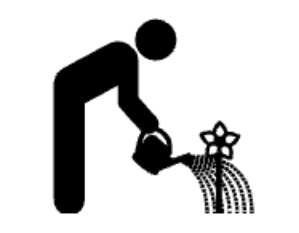As a new gardener, you’ve probably heard about perlite. But what exactly is it, and why is it such a hot topic in gardening circles?
This comprehensive guide will walk you through the world of perlite, exploring its composition, uses in gardening, advantages, and more. By the end, you’ll have a solid understanding of perlite and how to incorporate it into your gardening routine.
Jump to a section:
What is Perlite?
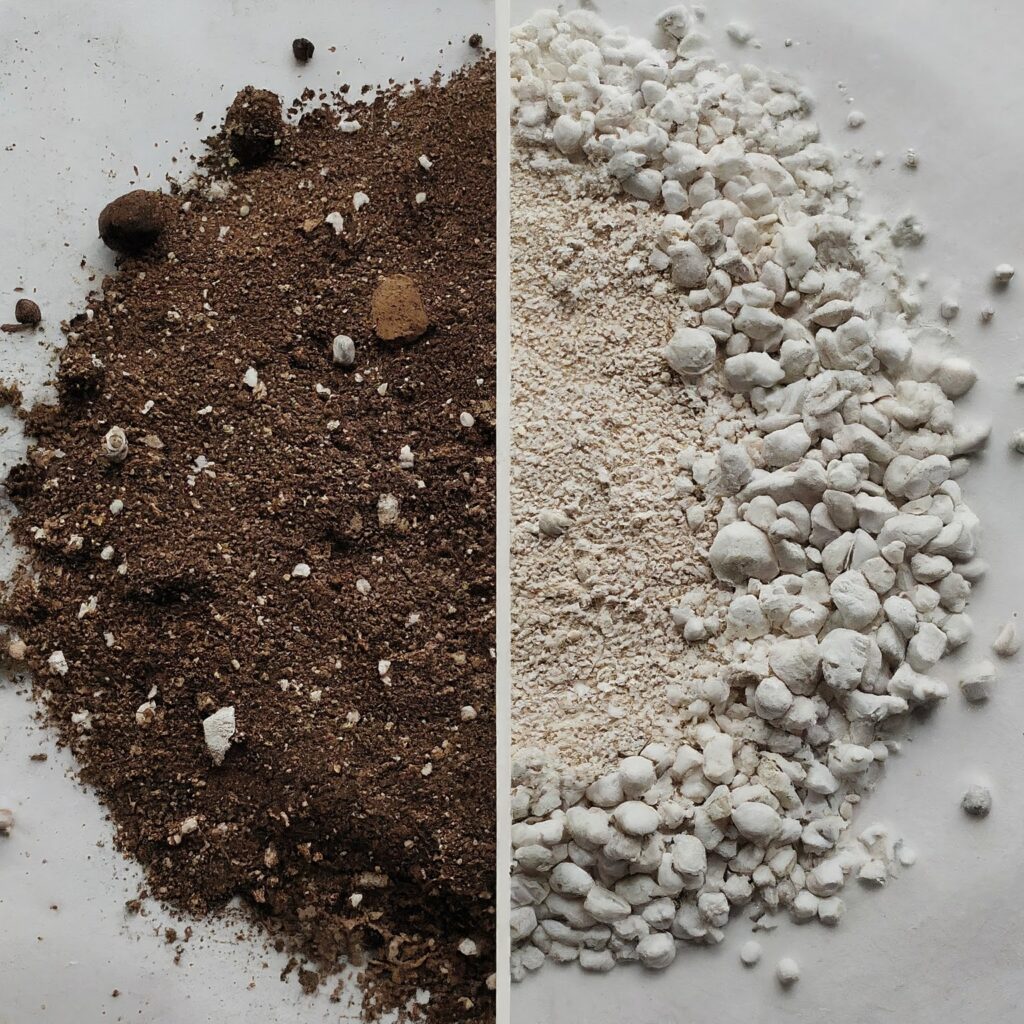
Perlite is a versatile and lightweight mineral that’s commonly used in gardening. But it isn’t your average mineral.
This volcanic popcorn is a natural wonder crafted by the Earth itself. In essence, it is a volcanic glass that is heated until it swells like dough in an oven. This swelling turns it into perlite, a lightweight marvel.
When perlite expands, it becomes like a sponge, soaking up water and letting air flow through. This makes it perfect for gardening! It transforms regular soil into a comfy home for plant roots.
So, whether you’re planting in pots, beds, or hydroponic systems, perlite’s got your back. It provides the ideal conditions for plants to grow and thrive.
The next time you’re in the garden, give a nod to perlite – nature’s unsung hero, born from the depths of the Earth.
What Does Perlite Contain?
Perlite’s main ingredient is silicon dioxide, like what you find in quartz and sand. But here’s the cool part: it also holds onto little drops of water inside. This unique mix makes perlite super light and full of tiny holes.
Other elements found in this white granular material include aluminum oxide (Al2O3), sodium oxide (Na2O), potassium oxide (K2O), iron oxide (Fe2O3), and calcium oxide (CaO). However, these elements occur in smaller percentages compared to silicon dioxide.
The exact composition of perlite may vary depending on its source and processing methods.
What is the Actual Use of Perlite?
Perlite finds its way into a range of industries, thanks to its special qualities:
- Construction: It’s used in lightweight concrete and plaster mixes to make buildings more insulated and lighter.
- Filtration: Perlite aids in water treatment and filtration processes, ensuring liquids like beer and wine are clear and free of impurities.
- Insulation: In buildings and homes, perlite acts as insulation, keeping spaces warm in the winter and cool in the summer.
- Abrasive Products: You’ll find perlite in soaps, cleansers, and exfoliating scrubs, helping to scrub away dirt and grime.
- Cryogenic Applications: Perlite’s insulating properties make it perfect for storing super cold liquids like liquid nitrogen and oxygen.
- Horticulture: Apart from gardening, this white granular material is essential in commercial horticulture for greenhouse growing, hydroponic setups, and landscaping projects. That’s because it provides optimal conditions for plant growth.
These different uses show just how versatile perlite truly is, making it an indispensable material across various industries.
What are the Uses of Perlite in Gardening?

Now, let’s specifically go over the uses of perlite in gardening.
Improved Soil Aeration
Soil aeration means making sure there’s enough oxygen in the soil for plants to breathe. Perlite is excellent at aerating soil.
It creates tiny air pockets, ensuring plant roots can easily access oxygen. This fosters robust root development and overall plant health, laying a solid foundation for growth.
When you mix perlite with heavy clay soil, it makes it lighter and easier for roots to spread, improving overall soil quality. What’s more? This white granular material acts like a cozy blanket, keeping roots warm in winter and cool in summer.
Enhanced Drainage
Sure, water is vital for plants, but too much of it can harm them. How? By depriving their roots of oxygen. This means good drainage is key to growing plants as it allows the soil to hold pockets of air crucial for root health.
Thankfully, perlite comes to the rescue by improving soil drainage. Its excellent filtering abilities help excess water drain away, preventing waterlogging and keeping roots oxygenated.
Perlite’s sturdy structure maintains air pockets in the soil, even when it’s compacted, ensuring roots have room to breathe and grow.
Soil Amendment
Perlite is the ultimate soil conditioner, turning dull dirt into fertile ground.
Mixing perlite into your soil improves its texture, structure, and nutrient retention. It lightens heavy soils, adds fluffiness to dense mixes, and strikes the perfect balance between water retention and drainage.
With this volcanic popcorn in the mix, your plants thrive in nutrient-rich soil.
Seed Starting
When starting seeds, many gardeners choose soilless mediums for their numerous advantages. These mixes, free from traditional soil, offer a range of benefits that promote successful seed germination and early plant growth.
Soilless mixes reduce the risk of diseases, ensuring healthier seedlings. They also provide excellent aeration and drainage, essential for root development and plant health. Plus, their lightweight nature makes handling seed trays easy and convenient.
These mixes typically include a blend of inorganic, organic, and sometimes synthetic ingredients, each serving a specific role in nurturing seeds.
Inorganic components like perlite and vermiculite create a light and airy texture, promoting root growth and preventing soil compaction. Thanks to the lightweight, well-draining nature of perlite, it provides a welcoming environment for germination.
Hydroponic Gardening
Think of perlite as the MVP (Most Valuable Player) in hydroponic gardening setups. Its inert nature means it doesn’t react with the water or nutrients in the system, making it ideal for supporting plant roots without affecting the growing environment.
Since it provides stability for the roots, you can rest assured your plants will anchor securely and access water and nutrients efficiently.
Also, with plenty of oxygen available, roots can thrive and absorb nutrients more effectively, leading to healthier plants and higher yields. In essence, perlite ensures that plants in hydroponic systems have everything they need to reach their full potential.
Container Gardening
Whether you’re growing herbs on your balcony or tomatoes on your patio, perlite is a must-have for container gardening.
Adding this material to a potting mix improves soil structure, prevents compaction, and ensures proper drainage. This allows container-grown plants to thrive, with ample room for roots to spread and access essential nutrients.
Types of Perlite
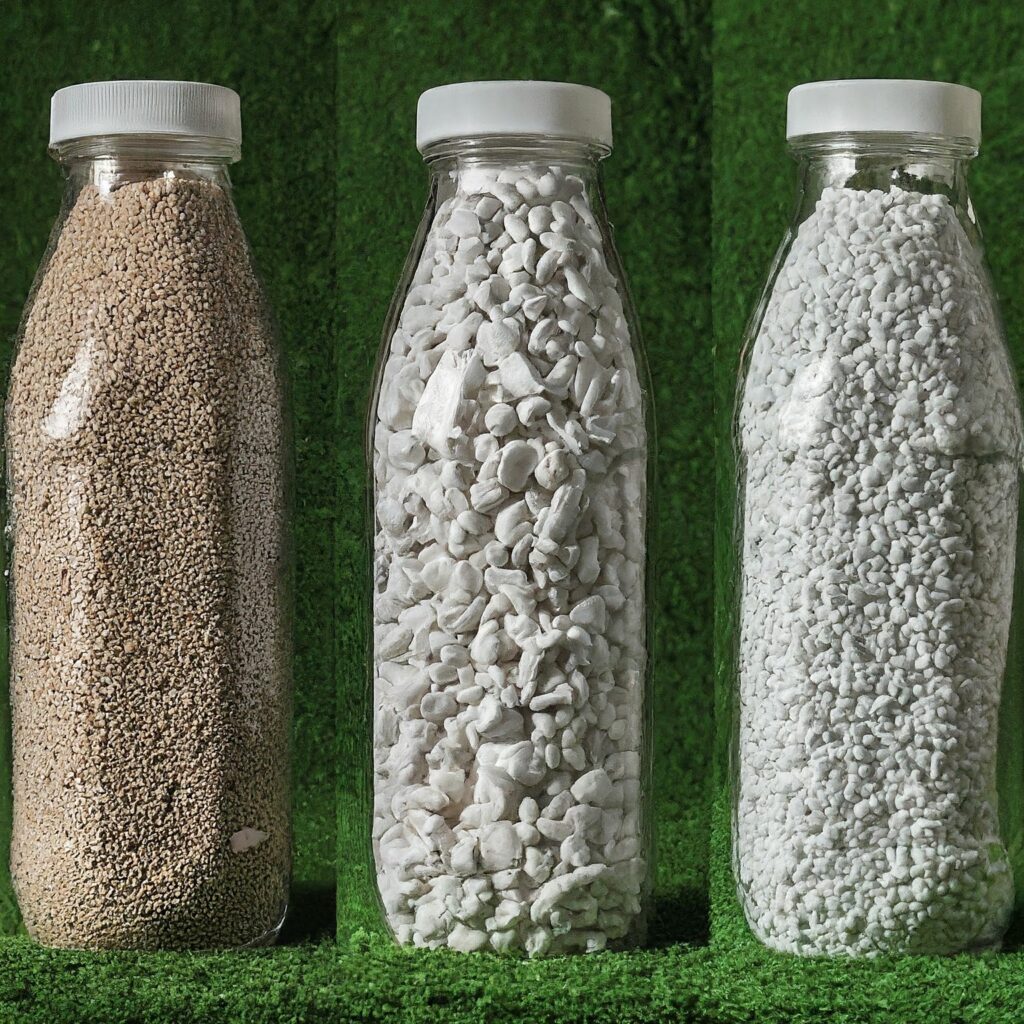
Perlite comes in various grades, each suited to different gardening needs. These grades include coarse, medium, and fine. It is best to pick the right type of perlite for specific gardening projects, ensuring optimal results for their plants’ growth and health.
Whether amending soil, starting seeds, or cultivating plants in hydroponic systems, the volcanic popcorn has a grade to suit every gardening need.
1. Coarse Perlite
Coarse perlite, with its larger particle size, is commonly used to amend soil and improve potting mixes. Its chunky texture helps to aerate the soil and improve drainage, making it perfect for plants that require well-draining soil conditions.
2. Fine Perlite
On the other hand, fine perlite has smaller particles and is preferred for more delicate tasks such as seed-starting mixes and hydroponic systems.
The fine texture allows for better water retention and ensures that seeds have sufficient access to moisture during germination. In hydroponic setups, the fine version of the amorphous volcanic glass provides a stable growing medium while allowing for efficient nutrient absorption by plant roots.
3. Medium Grade Perlite
Medium-grade perlite refers to perlite particles that are not too big (coarse) or too small (fine). This in-between size makes medium-grade perlite versatile and useful in gardening.
In soil mixes, medium-grade perlite helps improve soil structure by allowing air and water to flow through. It strikes a balance between draining excess water and retaining enough moisture for plants to thrive. This makes it suitable for many types of plants that need well-draining soil but still like a bit of moisture.
In hydroponic systems, medium-grade perlite provides a stable base for plant roots. It ensures they get enough oxygen and nutrients for healthy growth. Its porous texture keeps the roots happy by allowing air to circulate, which is crucial for their development.
Overall, medium grade perlite is a handy material for gardeners. It offers just the right balance of aeration, drainage, and moisture retention to support various plants and growing conditions.
How Do You Make Perlite Mix?
Making a perlite mix is super easy.
Method 1
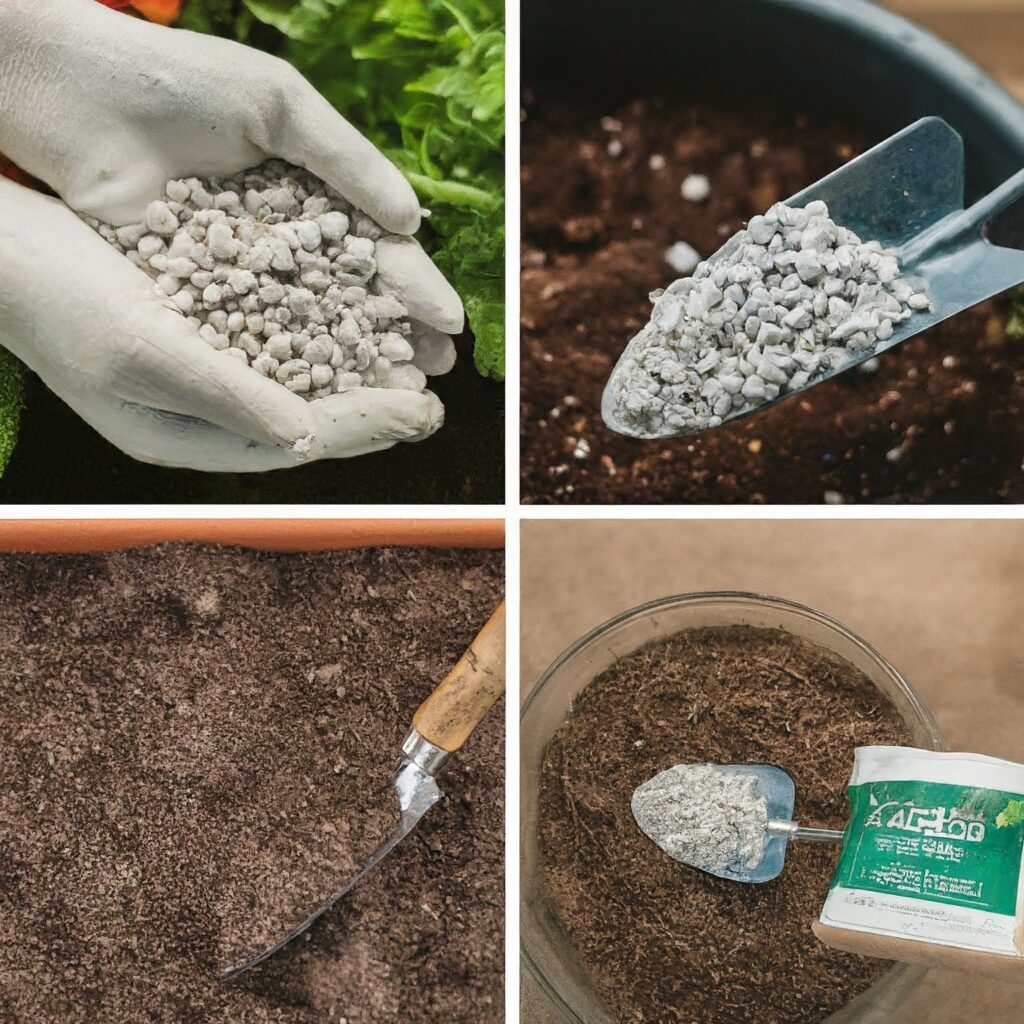
In the first method, all you need to do is blend perlite with your preferred potting soil or growing medium at a ratio of 1 part perlite to 1 part soil or adjust the ratio to suit your needs.
Once you have the right proportions, mix them thoroughly to ensure an even distribution of perlite throughout the soil. This step is crucial because it ensures that the perlite is evenly dispersed, which allows for consistent aeration and drainage in the soil. Mixing thoroughly also helps prevent clumps of perlite from forming, ensuring that your plants receive the full benefits of its properties.
The perlite mix allows you to tailor the soil to meet the specific needs of your plants, whether they require improved drainage, better aeration, or lighter soil conditions. Plus, it’s a simple and cost-effective way to enhance the performance of your growing medium and promote healthier, happier plants.
Method 2
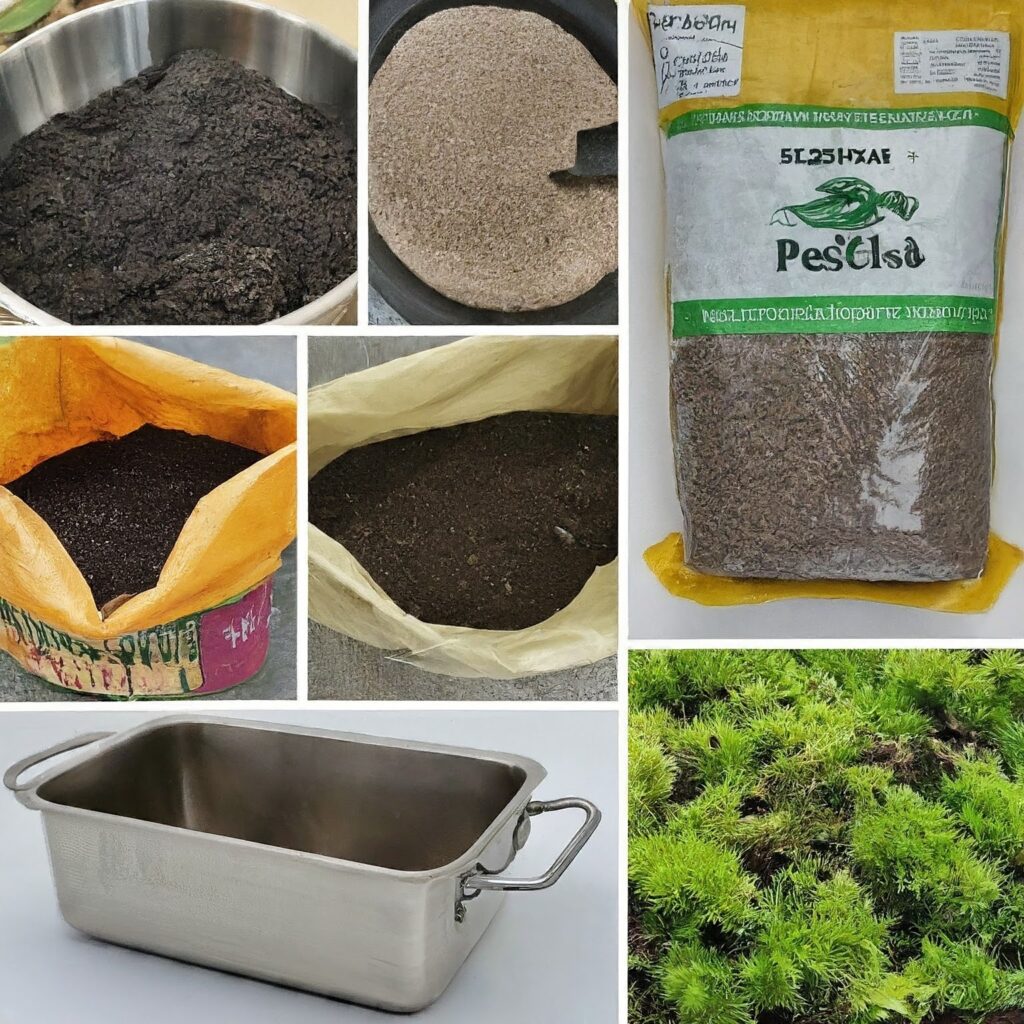
Materials Needed:
- Roasting pan
- Compost
- Perlite
- Peat moss
- Fertilizer
Step 1: Sterilize the Compost
Before diving into preparing the amorphous volcanic glass mix, let’s make sure your compost or garden loam is squeaky clean. This means zapping any lurking weed seeds or pesky disease organisms. Simply moisten your compost, spread it out in a disposable roasting pan, and pop it in the oven at 250 degrees F for 30 minutes.
Step 2: Mix It Up
Time to get mixing! Combine equal parts of compost, perlite, and peat moss. This trio creates the perfect harmony for your plants, offering just the right balance of drainage, aeration, and moisture retention.
Step 3: Add Fertilizer
Don’t forget to give your plants a little extra boost! For every bushel of perlite mix, sprinkle in 2 tablespoons of a balanced fertilizer. This ensures your leafy buddies get all the nutrients they need for happy, healthy growth. And remember, start adding soluble fertilizer around 10 weeks after planting to keep the party going.
Vermiculite vs Perlite

Vermiculite and perlite are both popular soil amendments in gardening, but they serve different purposes due to their distinct properties.
Vermiculite is known for its ability to retain water and nutrients. This makes it an excellent choice for plants that thrive in moist soil conditions.
The porous structure of vermiculite allows it to hold onto water and essential nutrients, ensuring that plants have access to them over time. As such, it is ideal for plants that require consistent moisture levels to grow and thrive.
On the other hand, perlite is prized for its exceptional drainage and aeration properties. As explained above, its lightweight and porous nature creates air pockets in the soil, allowing excess water to drain away quickly.
This amorphous volcanic glass is perfect for plants that prefer well-draining soil, such as succulents and cacti, as it helps prevent root rot and other moisture-related issues.
Advantages and Disadvantages of Perlite for Plants
Advantages:
- Improves soil structure and drainage
- Promotes healthy root growth
- Prevents soil compaction
- Lightweight and easy to handle
- pH neutral and sterile
Disadvantages:
- Can rise up to the soil surface as time passes.
- Limited water retention capacity
- May require frequent watering in hot and dry conditions
Where to Buy Perlite?
You can easily find perlite at garden centers, nurseries, and online stores. You may want to look for perlite soil mixes or standalone perlite products in the gardening section of your local store.
Conclusion
Perlite is a valuable ally for gardeners looking to improve soil quality, drainage, and aeration. Whether you’re starting seeds, potting plants, or setting up a hydroponic system, perlite has a place in your gardening toolkit. Experiment with different perlite mixes to see how they benefit your plants and garden.
FAQs
1. How is Perlite Obtained?
Perlite is mined from volcanic deposits and then processed by heating it until it expands.
2. Is Perlite a Fertilizer?
No, perlite is not a fertilizer. It’s a soil amendment that improves soil structure and drainage.
3. What is a Substitute for Perlite?
Some alternatives to perlite include vermiculite, pumice, and sand. However, each has its own unique properties and may not be suitable for all gardening applications.
4. Do Plants Grow Better in Perlite?
Plants that prefer well-draining soil conditions often thrive in perlite mixes. However, it’s essential to consider the specific needs of your plants and adjust your soil mix accordingly.
5. Why is Perlite Hard to Find?
While perlite is a common gardening product, availability may vary depending on your location and the time of year. Consider purchasing perlite online if it’s not readily available in your area.
6. Is Perlite Safe for Health?
Yes, perlite is considered safe for gardening use. However, it’s essential to handle it with care and wear protective gear, such as gloves and a mask, when handling large quantities.
